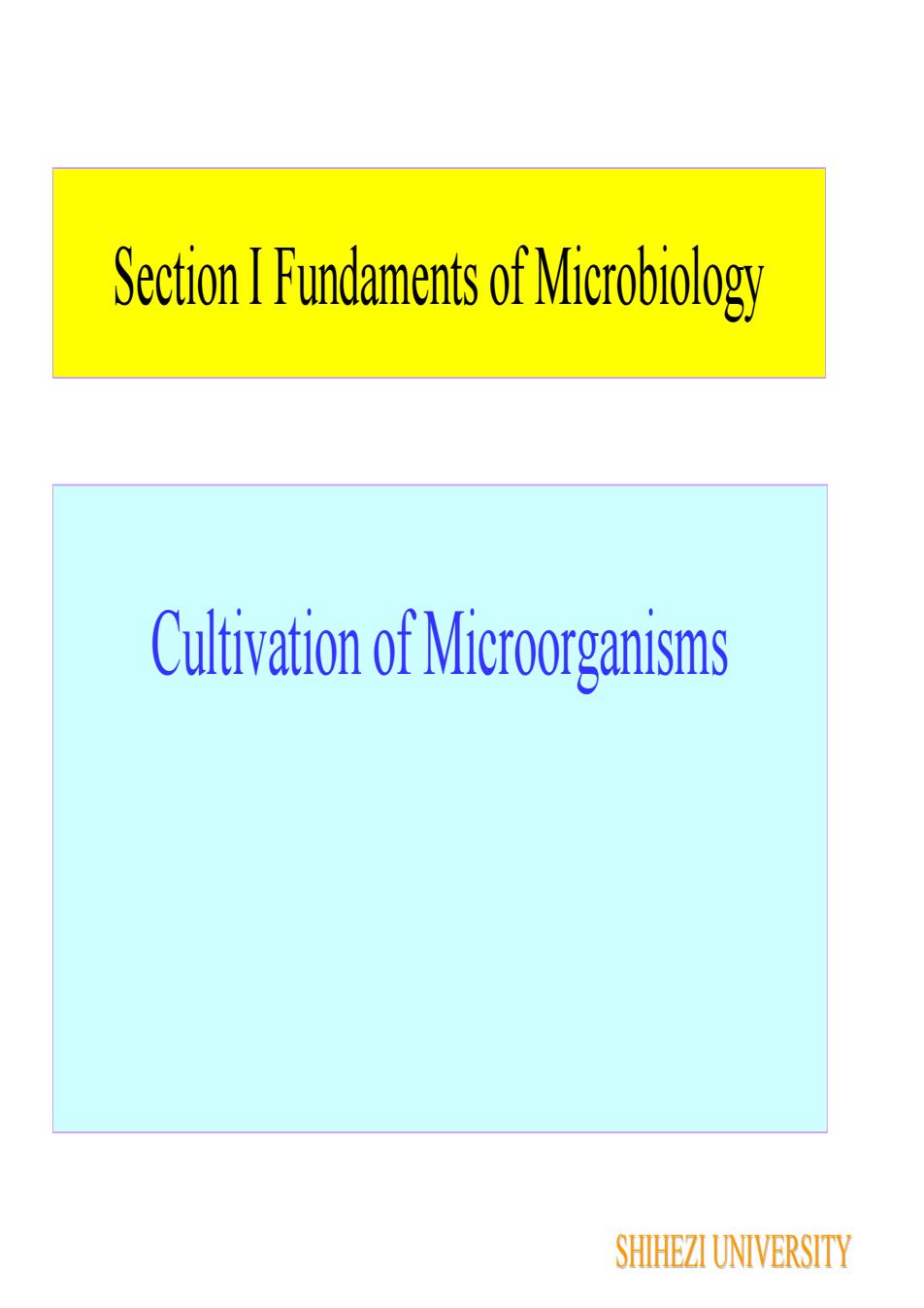
Section IFundaments of MicrobiologyCultivation of MicroorganismsSHIHEZI UNIVERSITY
Section I Fundaments of Microbiology Cultivation of Microorganisms SHIHEZI UNIVERSITY
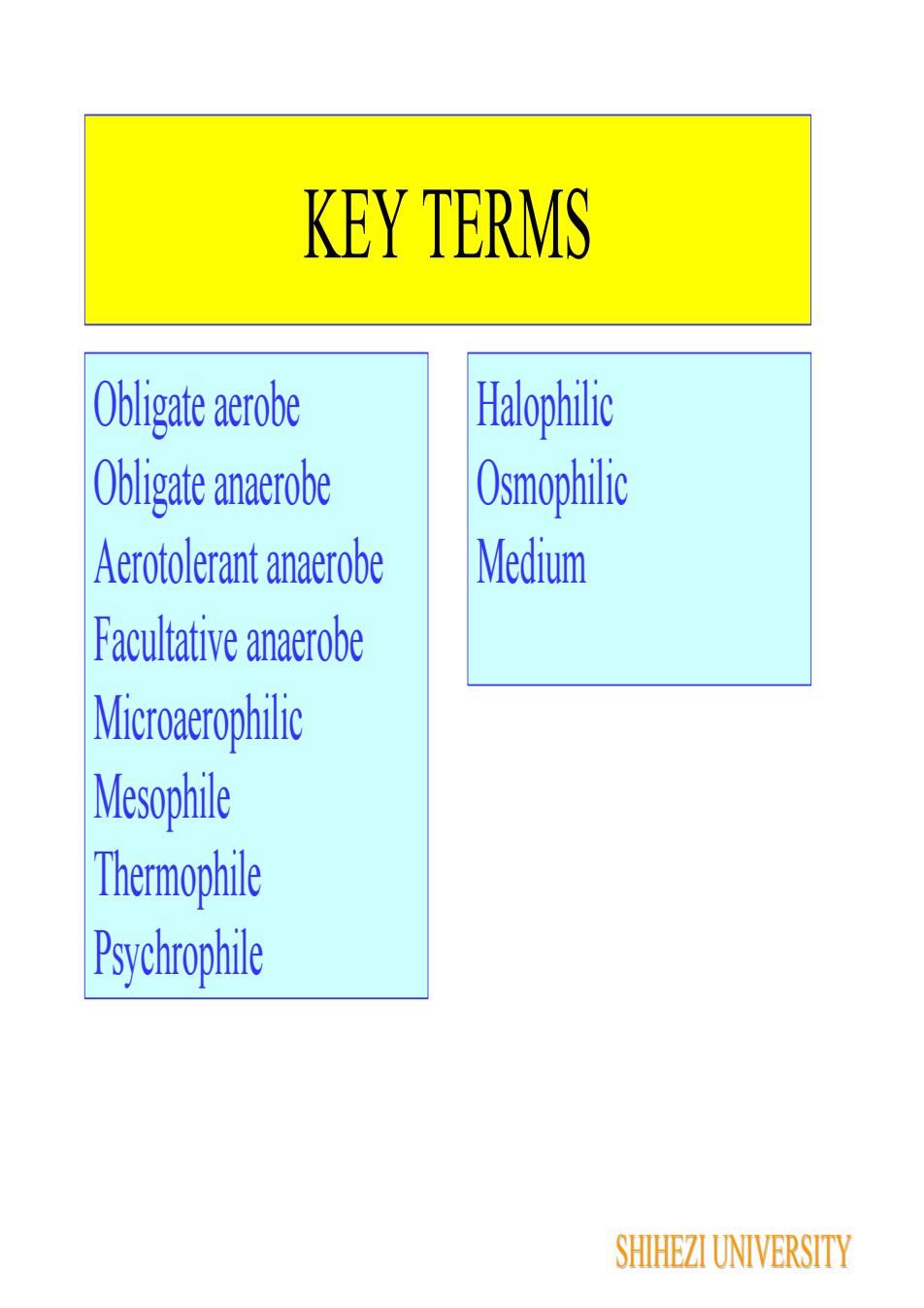
KEY TERMSHalopilicObligateaerobeOsmophilicObligate anaerobeMediumAerotolerant anaerobeFacultative anaerobeMicroaerophilicMesophileThermophilePsychrophileSHIHEZI UNIVERSITY
KEY TERMS Obligate aerobe Obligate anaerobe Aerotolerant anaerobe Facultative anaerobe Microaerophilic Mesophile Thermophile Psychrophile Halophilic Osmophilic Medium SHIHEZI UNIVERSITY
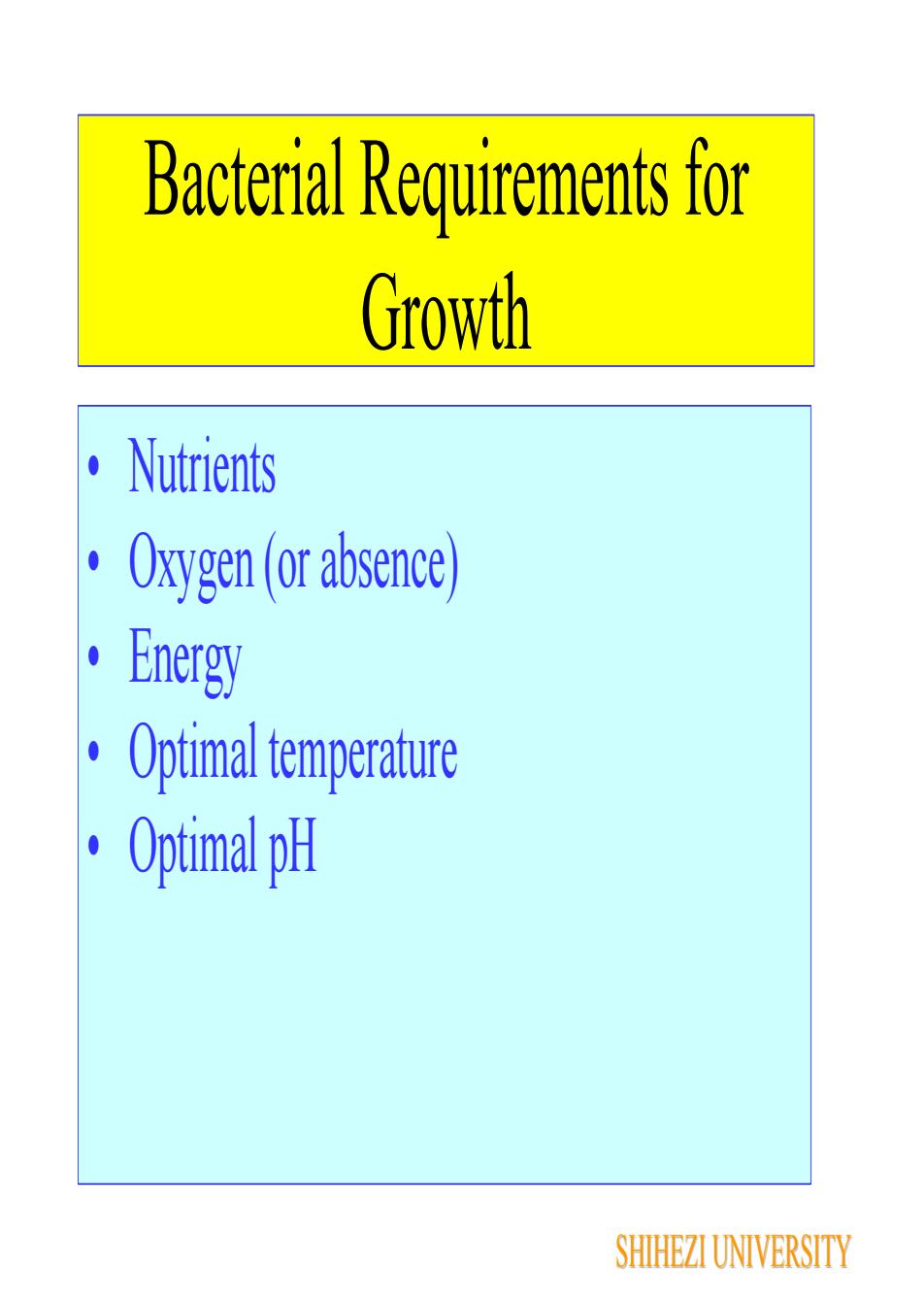
Bacterial Requirements forGrowth? Nutrients? Oxygen (or absence). Energy· Optimal temperature? Optimal pHSHIHEZI UNIVERSITY
Bacterial Requirements for Growth • Nutrients • Oxygen (or absence) • Energy • Optimal temperature • Optimal pH SHIHEZI UNIVERSITY
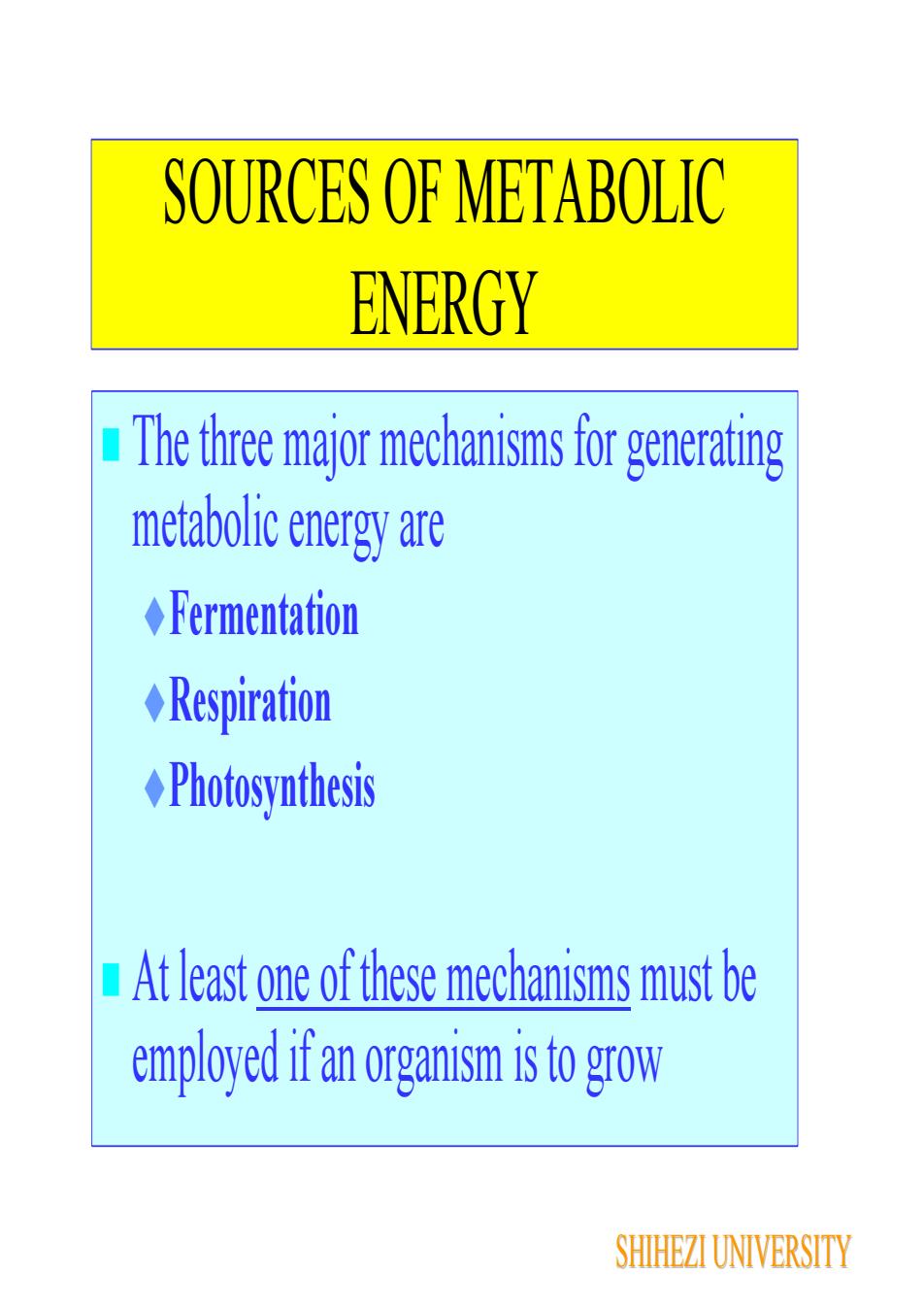
SOURCES OF METABOLICENERGY The three major mechanisms for generatingmetabolic energy areFermentationRespirationPhotosynthesis At least one of these mechanisms must beemployed if an organism is to growSHIHEZI UNIVERSITY
SOURCES OF METABOLIC ENERGY The three major mechanisms for generating metabolic energy are Fermentation Respiration Photosynthesis At least one of these mechanisms must be employed if an organism is to grow SHIHEZI UNIVERSITY
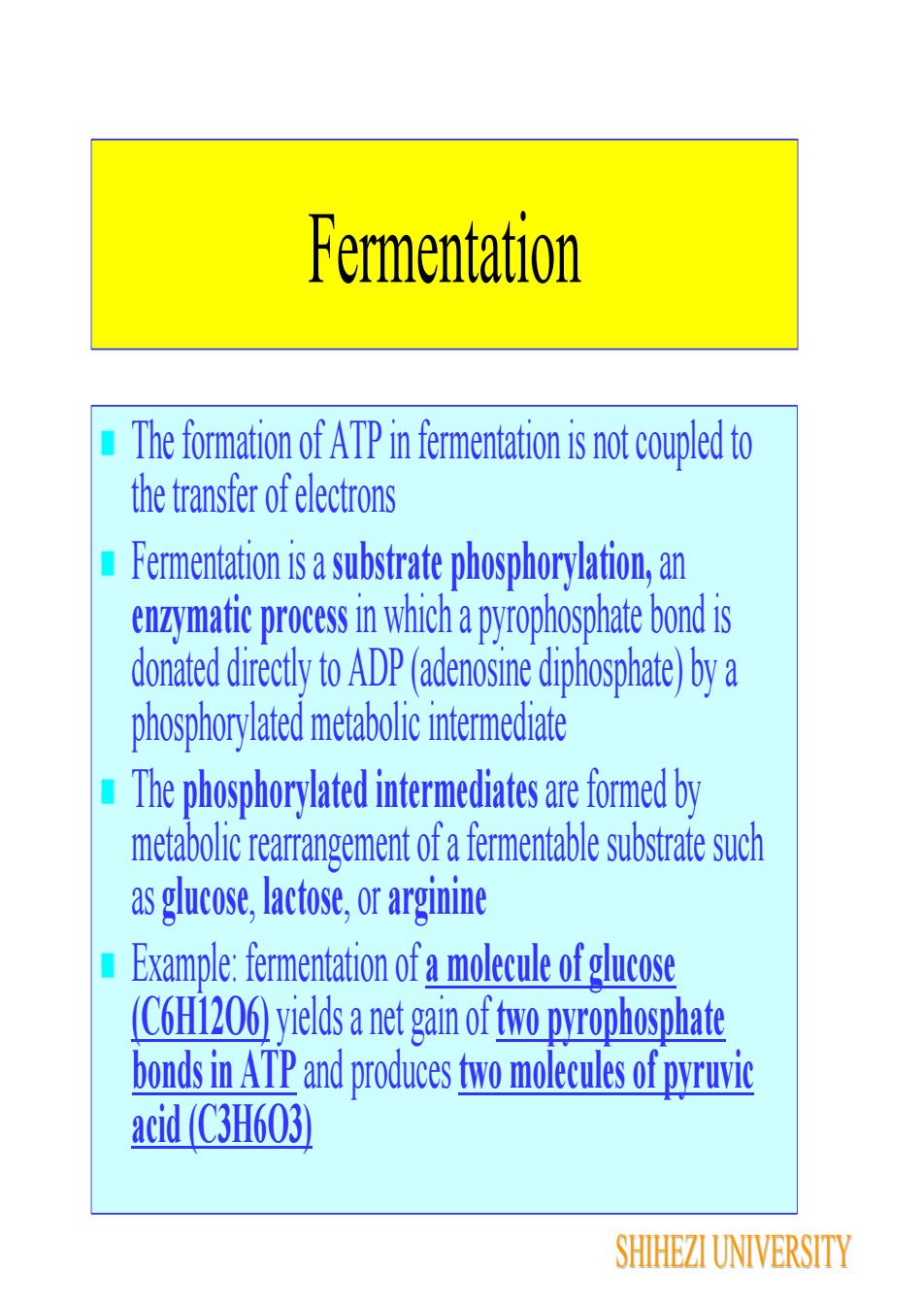
FermentationThe formation of ATP in fermentation is not coupled tothe transfer of electronsFermentation is a substrate phosphorylation, anenzymatic process in which a pyrophosphate bond isdonated directly to ADP (adenosine diphosphate) by aphosphorylated metabolic intermediate The phosphorylated intermediates are formed bymetabolic rearrangement of a fermentable substrate suchas glucose, lactose, or arginineExample: fermentation of a molecule of glucose(C6H1206) yields a net gain of two pyrophosphatebonds in ATP and produces two molecules of pyruvicacid (C3H603)SHIHEZI UNIVERSITY
Fermentation The formation of ATP in fermentation is not coupled to the transfer of electrons Fermentation is a substrate phosphorylation, an enzymatic process in which a pyrophosphate bond is donated directly to ADP (adenosine diphosphate) by a phosphorylated metabolic intermediate The phosphorylated intermediates are formed by metabolic rearrangement of a fermentable substrate such as glucose, lactose, or arginine Example: fermentation of a molecule of glucose (C6H12O6) yields a net gain of two pyrophosphate bonds in ATP and produces two molecules of pyruvic acid (C3H6O3) SHIHEZI UNIVERSITY